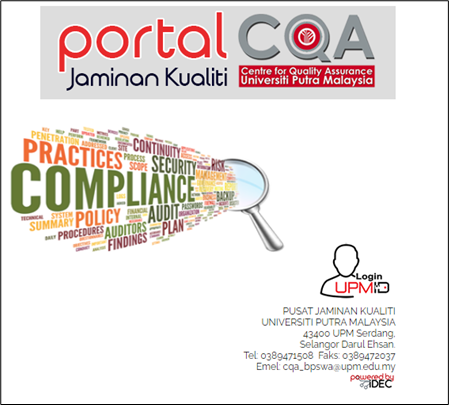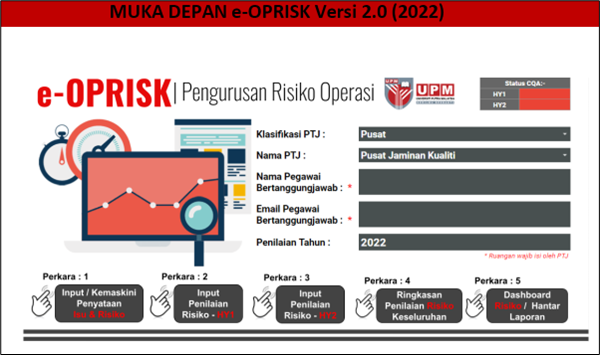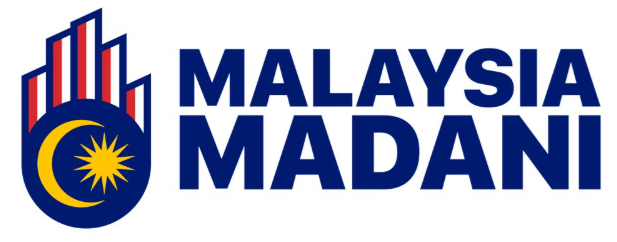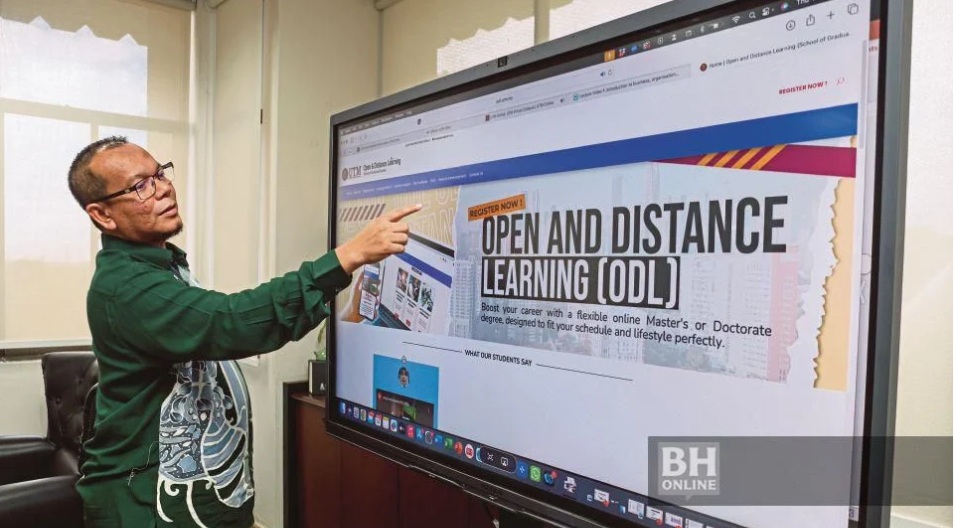 |
||
PENGURUSAN AUDIT KUALITI
Audit Kualiti adalah bentuk pemantauan yang dijalankan bagi mengesahkan Sistem Pengurusan Kualiti UPM memenuhi keperluan ditetapkan di dalam standard. Terdapat dua (2) audit yang dilaksanakan setiap tahun iaitu Audit Dalaman UPM dan Audit Badan Pensijilan. Audit Dalaman UPM bertujuan membantu UPM menghadapi Audit Badan Pensijilan di mana semua kekuatan dan kelemahan sesuatu proses itu dapat dikenal pasti agar penambahbaikan dapat dilaksanakan. Penambahbaikan kualiti adalah satu proses yang berterusan dan ia diambilkira pada setiap peringkat bagi meningkatkan perkhidmatan sedia ada. Ianya juga bertujuan memenuhi keperluan Standard MS ISO 9001:2015 dan MS ISO/IEC 27001:2013 klausa 9.2 iaitu organisasi hendaklah menjalankan audit dalaman secara berkala bagi menyediakan maklumat sama ada akur atau tidak terhadap keperluan Sistem ISO dan keperluan Standard Antarabangsa. Audit Dalaman UPM dilaksanakan oleh Juruaudit Dalaman (JAD) yang dilantik di peringkat UPM dan juga PTJ. Sehingga Mei 2022, UPM mempunyai seramai 639 orang JAD QMS (101 orang JAD Universiti dan 538 orang JAD PTJ) serta 109 orang JAD ISMS (45 orang JAD Universiti dan 64 orang JAD PTJ). JAD yang dilantik telah menghadiri kursus yang dijalankan sama ada di dalam atau di luar UPM. Pengurusan Audit Dalaman UPM secara keseluruhan dipantau melalui sistem atas talian iaitu PortalCQA seperti yang ditunjukkan pada Rajah 17. Portal ini dibangunkan secara bersama oleh Pusat Jaminan Kualiti (CQA) dan Pusat Pembangunan Maklumat dan Komunikasi (iDEC). Ia bertujuan untuk memastikan kelancaran dan keberkesanan pengurusan dan pemantauan penemuan Audit Dalaman UPM yang melibatkan QMS dan ISMS.
Rajah 17 : Paparan Muka Depan PortalCQA PENGURUSAN RISIKO OPERASI UPM
Bagi mematuhi keperluan Standard ISO 9001:2015, Pusat Jaminan Kualiti (CQA) telah membangunkan Sistem Pengurusan Risiko Operasi (e-OPRISK) bermula pada 10 April 2019. Idea ini tercetus setelah melihat kesukaran Pentadbir untuk mengurus pelaporan ini secara manual untuk dibentangkan dalam Mesyuarat Jawatankuasa Kualiti UPM. Laporan ini juga turut dilaporkan dalam Mesyuarat Kajian Semula Pengurusan (MKSP) UPM, Jawatankuasa Kerja Pengurusan Risiko UPM serta Jawatankuasa Induk Pengurusan Risiko UPM. Empat (4) Objektif e-OPRISK, iaitu: 1. memperolehi data yang tepat dan boleh dipercayai; 2. mengurangkan masa pengumpulan dan menganalisis data; 3. mengurangkan keperluan tenaga kerja; dan 4. meningkatkan kerja yang lebih efisyen dan berkualiti.
Dengan terlaksananya e-OPRISK ini dapat menguruskan pelaporan pengurusan risiko operasi UPM secara lebih sistematik. Projek e-OPRISK ini juga telah memenangi Anugerah Inovasi Perkhidmatan bagi Kategori Pengurusan sempena Hari Kualiti dan Inovasi Perkhidmatan (HKIP) UPM Tahun 2019. e-OPRISK telah ditambah baik pada tahun 2021 dan yang terkini penambahbaikan pada tahun 2022 (versi 2.0) seperti yang ditunjukkan pada Rajah 18. Penambahbaikan berterusan ini adalah selaras dengan keperluan semasa.
Rajah 18 : Paparan Muka Depan e-OPRISK Versi 2.0 (2022)
|
||
































